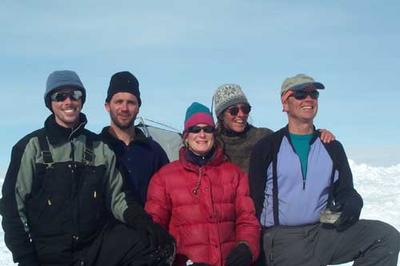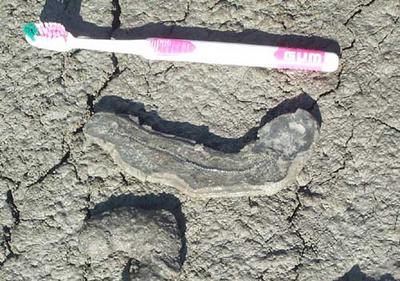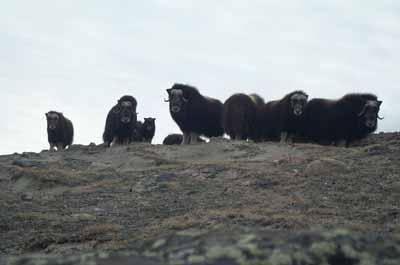19 May, 2003
Weather: Fortunately, it is not as much of an issue as it once was. We are now in Kangerlussuaq staying in the KISS building, which is heated and covered. It is around 50 degrees F and I can wear shorts!
Cutting right down to the wire!!!
As the pilots were flying in we were still not quite done drilling but close… we were on core tube number 50 our last one. Fortunately the otter was picking up the ice core boxes and delivering them to Summit and would be returning in less than 3 hours. This did not give us much time to take down all of the tents, pack our bags and disassemble the drilling tower. We had just enough time to flop on our packed bags as the otter dropped out of the sky and picked us up for the return flight to Kangerlussuaq!
Our data collection was complete, however we needed to take care of drying and putting away gear before we could enjoy the Kanger area for the next four days before our return flight to the states. Once everything was complete I asked Greg to guide me on a little fossil hunt. The town of Kangerlussuaq is built on a fjord, which is a large inlet that juts into Greenland. As the ice melts from the ice edge it picks up silt and deposits it into fjord covering up certain species. The fossils we found were in areas that surface water had eroded little canyons through the deposited silt. All of the fossils we found were of aquatic species such as fish and snails.
After fossil hunting I decided to take a mt. bike ride and hike to search out the local musk ox population. Musk ox where introduced to this area many years ago and have flourished. The population is well above 1000 animals. Each year the native population can hunt a certain number of animals for subsistence. Musk ox spend most of their time browsing grasses on the permafrost in herds. If they feel threatened, the adult animals get into a circle facing out while the young stay protected inside. This herd of musk ox was eating along a ridge and I was able to sneak below the rocks down wind to take a few pictures.



Contact the TEA in the field at
.
If you cannot connect through your browser, copy the
TEA's e-mail address in the "To:" line of
your favorite e-mail package.
|
